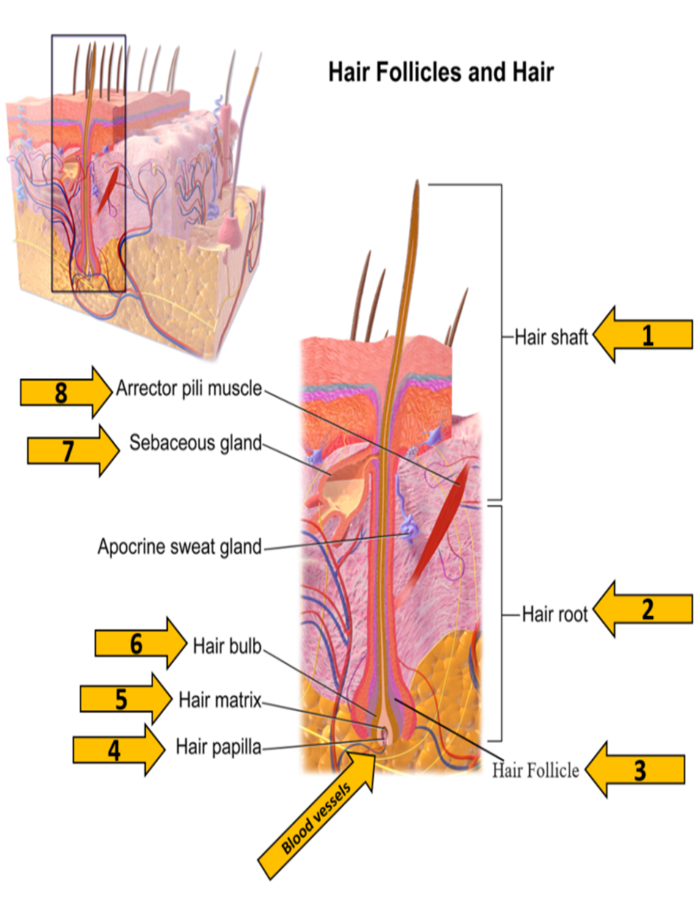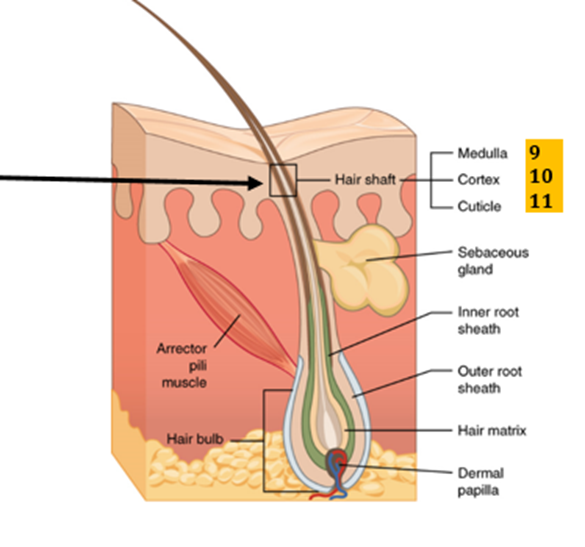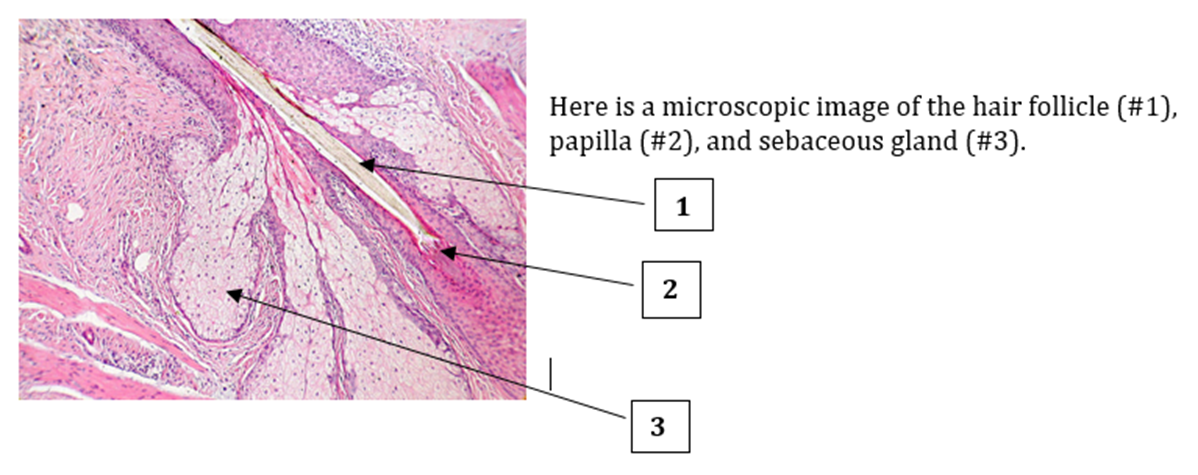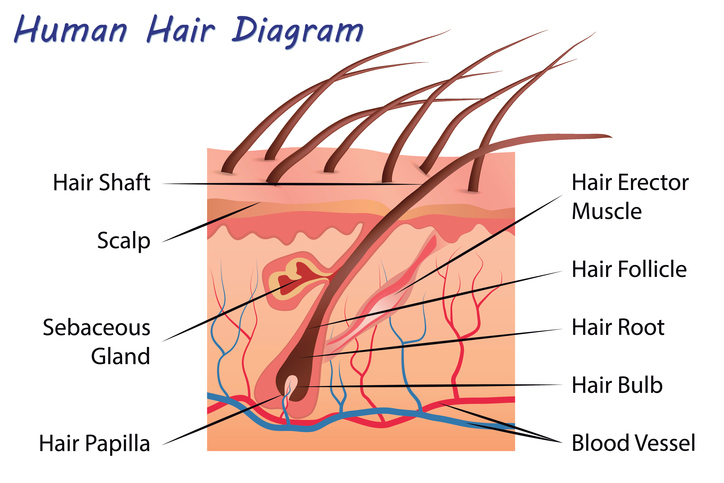Learn

 Hair Anatomy
Hair Anatomy
Hair is found all over the body except on the palms of the hands, soles of the feet, and the lips. It is primarily made of dead, keratinized cells and serves a variety of functions including protection, sensory input, thermoregulation, and communication.
Look at the chart below related to hair growth.

Image 1

Image 2
Strands of hair originate in the tunnel-like segment called the hair follicle (See #3 on image) of the dermis.
The hair shaft (See #1 on Image 1) is the part of the hair that is not anchored to the follicle. It is composed of keratin and dead cells.
There are 3 layers to the hair shaft:
- Medulla (See #9 on image) is the innermost layer.
- Cortex (See #10 on image) is the second layer making up most of the hair shaft.
- Cuticle (See #11 on image) is the outermost layer made of shingle-like scales protecting the hair shaft. It contains both the cortex and the medulla, which holds the hair's pigment, giving it color.
The rest of the hair, which is anchored in the follicle, lies below the surface of the skin and is referred to as the hair root (See #2 on image).
The hair root ends deep in the dermis at the hair bulb (See #6 on image), a rounded area where the hair matrix (See #5 on image) is located and cells divide to produce new hair.
The hair bulb surrounds the hair papilla (See #4 on image), which contains blood vessels to nourish the cells and nerve endings from the dermis.
The arrector pili muscle (See #8 in image) is attached to the hair follicle, and when it contracts, hair stands up and sebaceous glands (See #7 in image) secrete oil.

![]() Check Your Understanding:
Check Your Understanding:
1. What structure of the hair is where mitosis (or cell division) occurs to form new hair cells?
2. What structure of the hair contains blood vessels to nourish the cells?
3. The tunnel-like segment where the hair grows is the ____.
4. The part of the hair visible above the skin and not anchored to the hair follicle is the ____.

 Hair Growth
Hair Growth

Hair grows, sheds, and is replaced by new hair. Hair growth occurs in 3 phases:
- Anagen phase (phase lasts 2-7 years) - cells divide rapidly at the root of the hair, pushing the hair shaft up and out and growing at a rate of 0.3 mm per day.
- Catagen phase (lasts only 2 to 3 weeks) - marks a transition from the hair follicle's active growth.
- Telogen phase (lasts about 2 to 4 months) - the hair follicle is at rest, and no new growth occurs.
The basal cells in the hair matrix produce a new hair follicle, which pushes the old hair out as the growth cycle repeats itself.
Approximately 50 hairs are lost and replaced per day.
Hair loss occurs if there is more hair lost than what is replaced.
![]() Check Your Understanding:
Check Your Understanding:
1. The phase of most growth of hair occurs during the _______ phase.
2. The phase of human hair growth where no growth occurs is the ______ phase.

 Hair Color
Hair Color
Hair gets its color from the melanin pigment produced by melanocytes in the hair papilla. Different hair color results from differences in the type of melanin, which is genetically determined. As a person ages, hair tends to lose its color and becomes gray due to a decrease in melanin production.

![]() Check Your Understanding:
Check Your Understanding:
1. Jane's hair is turning gray. How would you explain to Jane what is causing this?

